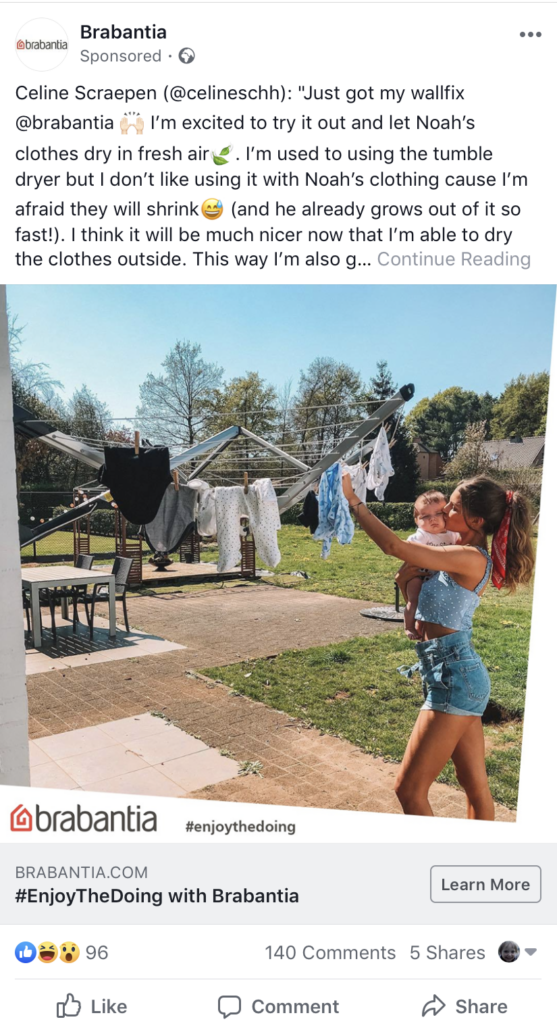The influencer fail
Ah, the influencer fail. You know one when you see one. The second my eye caught this Brabantia Facebook ad, I knew I had to check out the comments 🙂 And they did not disappoint.
About hanging your laundry while maintaining the perfect Lolita pose. About the yeah-right practicality of hanging laundry while snuggling a baby. About why dad wasn’t helping with either the laundry or the baby. About moms really looking like that and being depicted like that. And, girl, about needing to do something about those weeds in the garden. All of which set off a good old-fashioned Facebook bitch fest between posters.
The influencer fail
Dear Brabantia, influencer marketing can be a powerful tool, but you still have to get it right. Influencer marketing seems to fall into two categories. Either it works because it is authentic in the way it shows real people we admire because of their authenticity. So no baby snuggling while laundry juggling. Or it is superfake, showing a polished reality (just like ads always have) we aspire to. Think Kardashians. But then you need to pull out all the staging and make-up and Photoshop stops. This Brabantia is a sad-looking in between.
The influencer fix?
Unsurprisingly, there was do-over. I would have loved to hear that briefing: “Yeah, so less Daisy Duke. And ditch the baby, but throw in the dog. And maybe roll in the barbecue? And a tray of food! After all, a mom who takes care of her family, feeds her family!”. The result? Well, I guess we’re not laughing anymore. Now it is just meh.
Of course, there is a good chance Brabantia will sell more products because of the snickers the first ad got. No publicity is bad publicity! After all, we have given the Wallfix more attention than we ever have before. But in the long run, you really don’t want to be the butt of the joke. Oh well, in the land of social media, every day is a do-over. Let’s see what Brabantia comes up with next.




